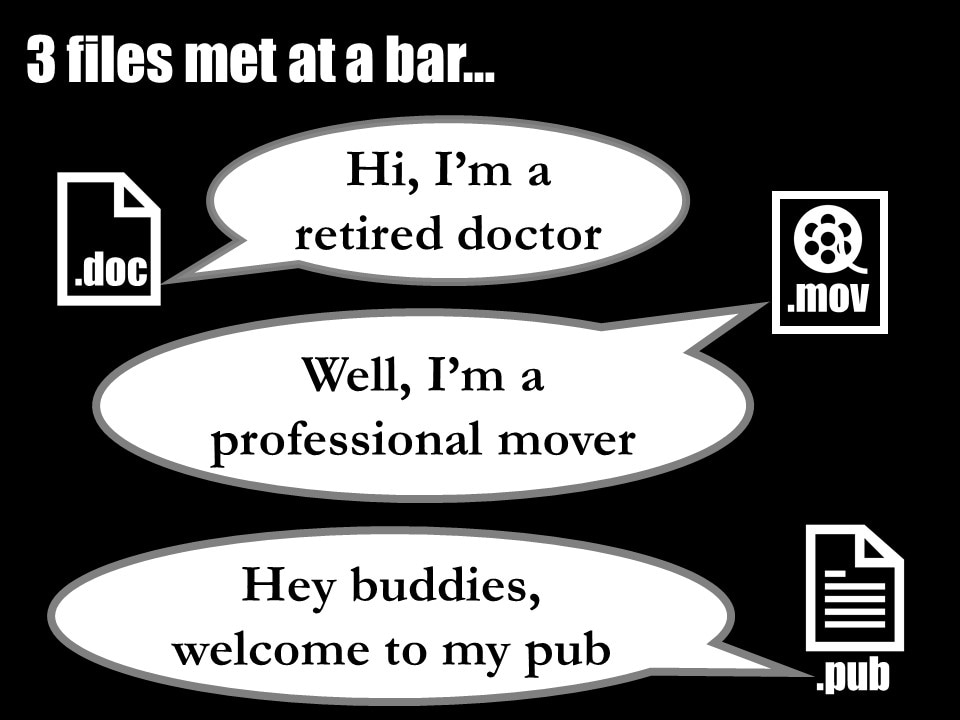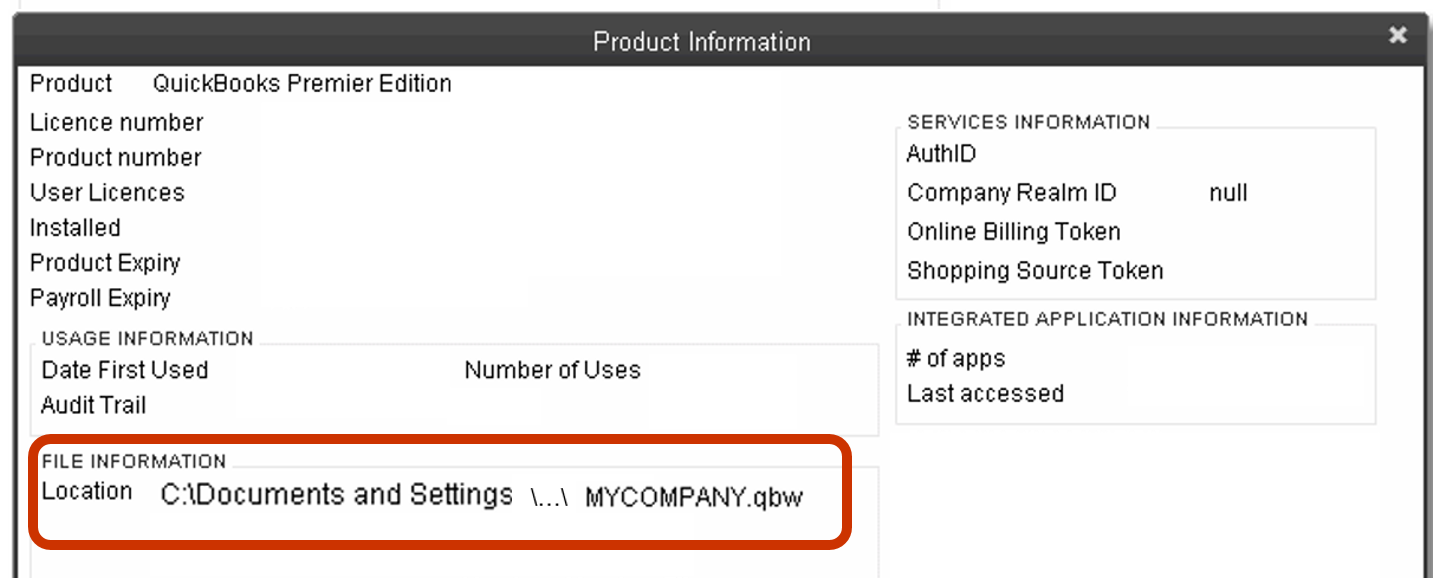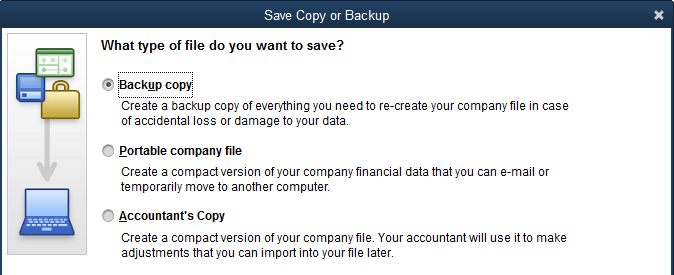|
You're puzzled by all the QuickBooks file extensions in your computer: .QBW, .ND, .DSN, .TLG. "Do I need to know them?" You ask. I'll explain the following file extensions to you in a while:
Before that, let's begin by understanding how a software program reads data files. For example: Software Program : Data File MS Word : Filename.docx MS Excel : Filename.xlsx MS Powerpoint : Filename.pptx Adobe Reader : Filename.pdf Similarly, this is then how the QuickBooks program reads a data file: QuickBooks : Filename.qbw This filename.qbw is what we commonly call a QuickBooks company data file (or data file, or company file, or QuickBooks file in short). It is the main data file where all your company financial records are stored. 1. Main Working File (*.QBW)Now, where does QuickBooks save this data file? In QuickBooks, with a company file opened, press F2 to call up a Product Information page like this: Here, you'll see some crucial information about your QuickBooks and data, including the (Data) File Location. Suppose you want to backup your company data, you can do so by using the internal backup function in QuickBooks (File > Back Up OR Create Copy). What then are the file formats for QuickBooks backup files? 2. Backup File Types (*.QBB, *.QBM)When backing up your QuickBooks data, you have 2 main options: Note: The file type called accountant's copy is an advanced feature where you can share your file with an external accountant using the same version of QuickBooks to merge in adjusting journal entries. This is outside the scope of this article. What are the different backup file types for? In short, one is a full backup while the other a partial backup: *.QBB QuickBooks Backup file: Backup of the QuickBooks QBW file and stores the company's financial data, templates, logos, letters, and images. (You should regularly backup your QuickBooks data as a QBB file.) *.QBM QuickBooks Portable file: Compressed version of the QuickBooks QBW file's financial data only (i.e., excluding any templates, logos, letters, and images). (You use a QBM file when you need to share only financial data because the file size is smaller.) A backup or portable file is not the main working file but functions as a zipped file that you can restore should your company data file be lost or corrupted. So, let's now back track to reading the QuickBooks company data file. 3. Database Support Files (*.DSN, *.ND, *.TLG)Remember that you don't need to use windows explorer to read your QuickBooks data file manually - you open it from the QuickBooks program itself. But suppose you go to the folder where your company data file is stored, you'll see 3 other file extensions associated with that company file: What are these files for? They are database support files that you don't need to access directly. *.DSN Data Source Name: A text file that contains the information required for the QuickBooks program to connect to the QuickBooks company file. *.ND Network Data: A configuration file that allows access to the QuickBooks company file. *.TLG Transaction Log: A log file that keeps track of changes to the file since the last manual backup (with complete file verification). The 1-2-3 of QuickBooks File ExtensionsIn summary, we've looked at 6 common file extensions in QuickBooks:
In order of importance, you only need to know the QBW and QBB files. Comments are closed.
|
AddBellsUsingSmartEffects
WriterKenny Goh Categories
All
© Copyright 2011-2017
All rights reserved |






